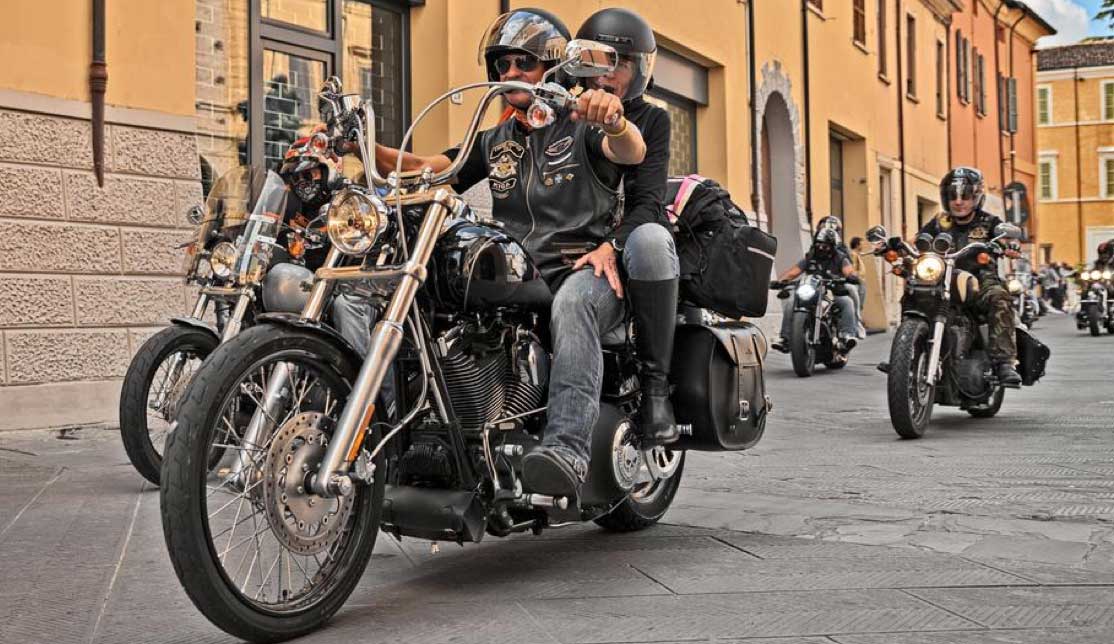Planning a Safe Motorcycle Group Ride: Your 2024 Guide

Posted By
Danny Reyes, Shipping Specialist, rider advocate and Angels fan. [email protected]
8 Things to Keep in Mind When Planning Your Next Big Ride
Group riding is some of the most fun motorcycle enthusiasts can have together. Taking a typically solitary activity and making it communal can completely change the way you experience your bike and the wide, open road. And if you’ve been in the game for a while, you already know that few things in life are quite as enjoyable as talking bikes with your fellow riders. But, whether it’s a two-man haul across the country or a charity rally across town, the rules are a bit different when riding as a pack. Here are some key things you need to keep in mind when you’re joining a group.
- Communicating Can Be Challenging—Sending a message from one rider to the next is one of the most valuable components of group riding. You’ll be able to alert one another to what’s ahead, whether that be a traffic jam, a thunderstorm, or a hazard in the roadway. Those old-school hand signals are still important to know, but it’s not enough to rely on them when you want to report to your lead rider from the core of the pack. One of the best ways to stay in touch with other bikers is to invest in a motorcycle intercom system so you can talk to one another as you ride.
- You Need to Have a Plan Upfront—Don’t just show up in a parking lot with a bunch of your buddies and throw together a big group ride. You need to plan out a route beforehand and, depending on the size of your group, maybe even let the local authorities know. On an individual level, make sure to show up to any rally raring to go. That means you’ve got a full tank of gas and a full belly! Remember, pulling off for refueling isn’t as easy when there are several other riders to consider.
- You Need a Leader and a Follower—When you’re embarking on your first group cruise, it helps if you designate a leader (the lead rider) to cruise at the head of the pack and a follower (the sweep rider) to serve as the final member of the group. These two riders serve as the bookends of the crew and help maintain a reasonable distance between your guys and the rest of the traffic. They will also help deliver any important messages to the core. For these reasons, it’s important that you pick two of your most experienced and confident riders to serve as the lead and sweep riders.
- The Staggered Formation Is Ideal—One of the first things you’ll come across when researching safe methods of group motorcycle riding is the staggered formation. This formation requires riders to stagger in a zigzag pattern across a single lane, leaving a two-second space (when riding at highway speeds) between you and the rider directly in front of you and a one-second space between you and the rider diagonally in front of you. This will help ensure that everyone has enough room and time to react should a hazard come about.
- It’s Vital to Know Everyone’s Experience Level—Try to position riders based on their experience level. The first few bikes should be operated by your top dogs—the riders who have logged thousands of miles over a dozen or more years—while the core of your group should be made up of newer riders who are prepared to fall in line and learn as they go. This is one of the reasons why it’s so important to get your entire group together before you actually kick off for your journey.
- Keep it Small, Especially at First—You don’t have to host a Sturgis-level ride every time you get your buddies together to cruise. In fact, it’s better if you don’t. For optimal safety, we recommend sticking to between two and six riders at a time. The smaller the group, the easier it will be to communicate with one another and make adjustments based on traffic, weather, etc. It’s also nearly impossible to keep big groups together on longer journeys, so keep it small at first. If you have more than six riders, consider breaking off into smaller groups.
- Designate a ‘Breadcrumb’ Rider—In group riding, separations are inevitable. When this happens, it helps to designate a drop-off rider, also known as a breadcrumb, to help keep the group together. When riders become separated but the group must change course—such as make a turn or pull off an exit—the drop-off rider will stay behind to let the others know which way to go. By following this strategy and leaving “breadcrumbs” along the route, everyone will remain together until the very end.
- Keep it Slow and Follow Traffic Laws—This is one of those times when you need to abide by every single traffic law, as it’s one of the things that keeps you safely together when you’re motoring as a pack. Think about it like this: Traffic laws can actually help keep you in sync since they keep everyone traveling at roughly the same speed while also keeping your whole group on the same stop-and-go schedule. Remember: Communal rides are not the time to speed, showboat or practice your latest tricks. If you want to get invited back, go slowly and follow the leader.
Don’t let a little planning deter you from getting out and hitting the pavement with your mounted brothers and sisters. Group motorcycle riding is one of the most rewarding activities out there for both newbies and seasoned gearheads, and it’s a true rite of passage for all dedicated bikers. As long as you follow these helpful tips, you can be sure every group cruise will result in fun memories!


